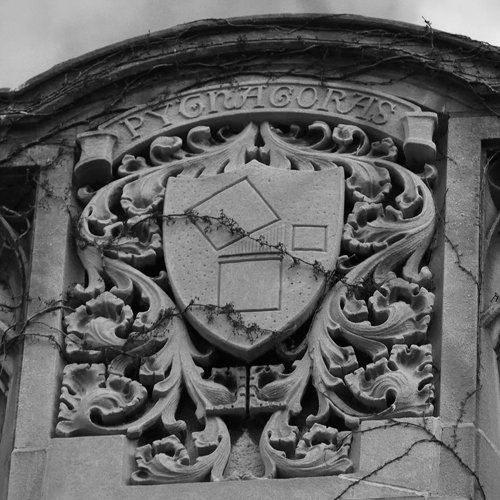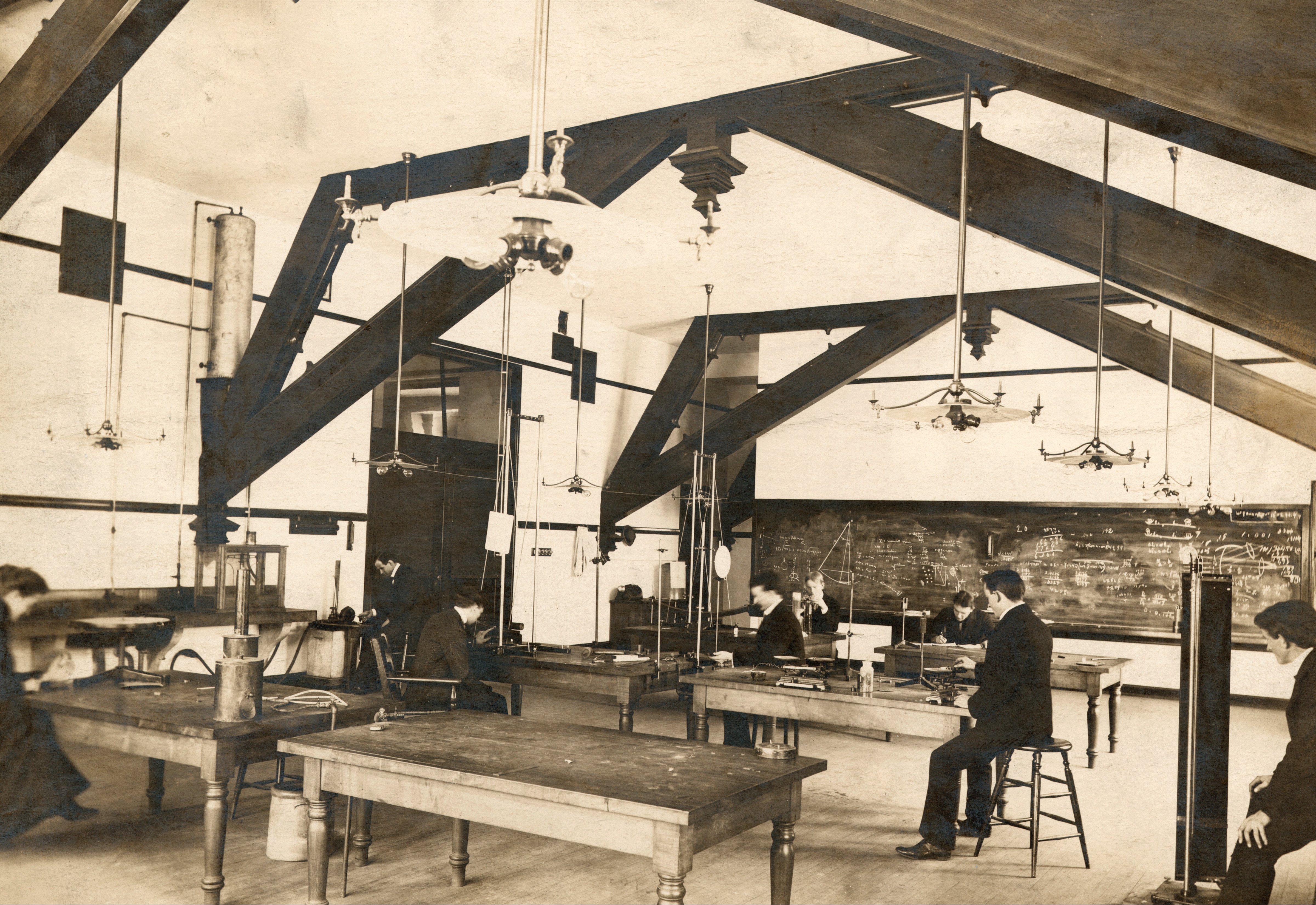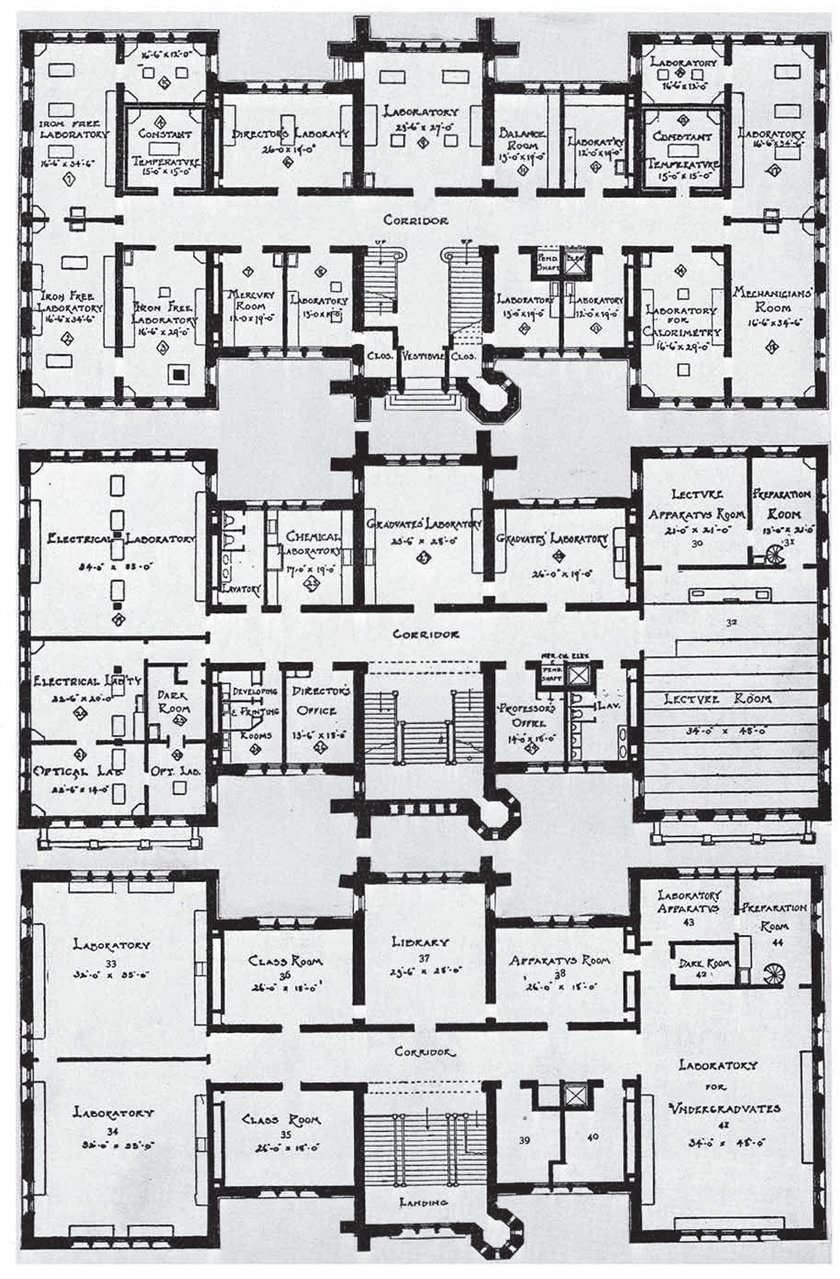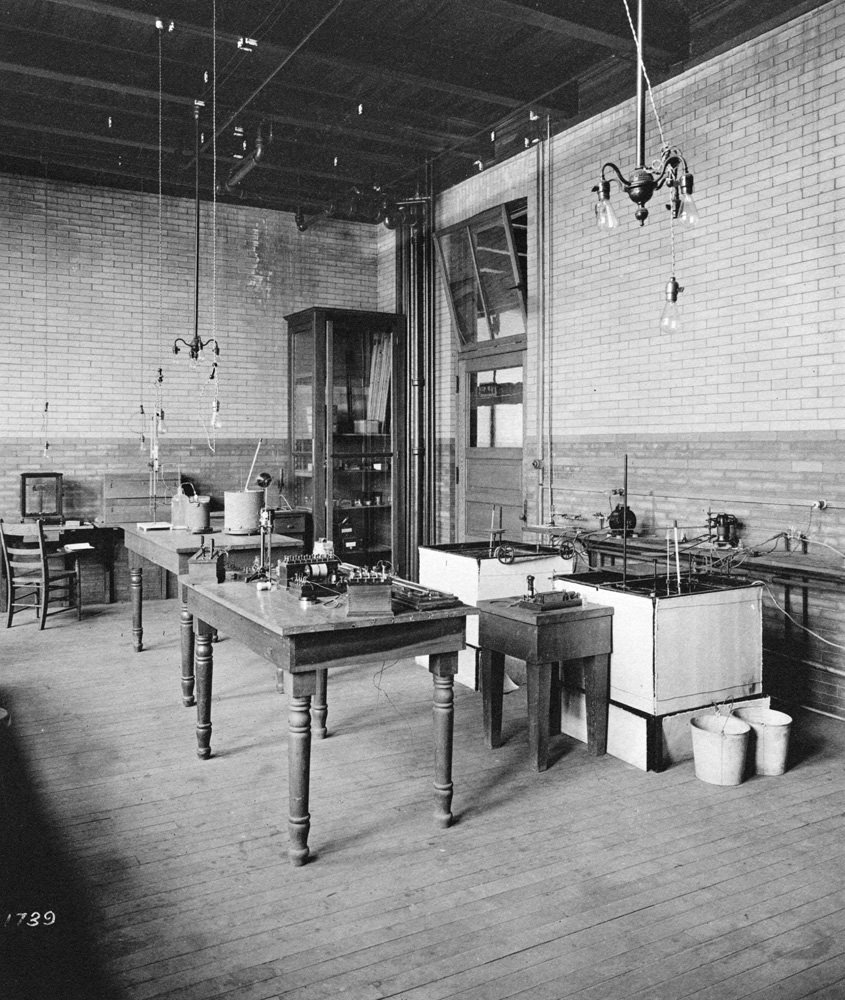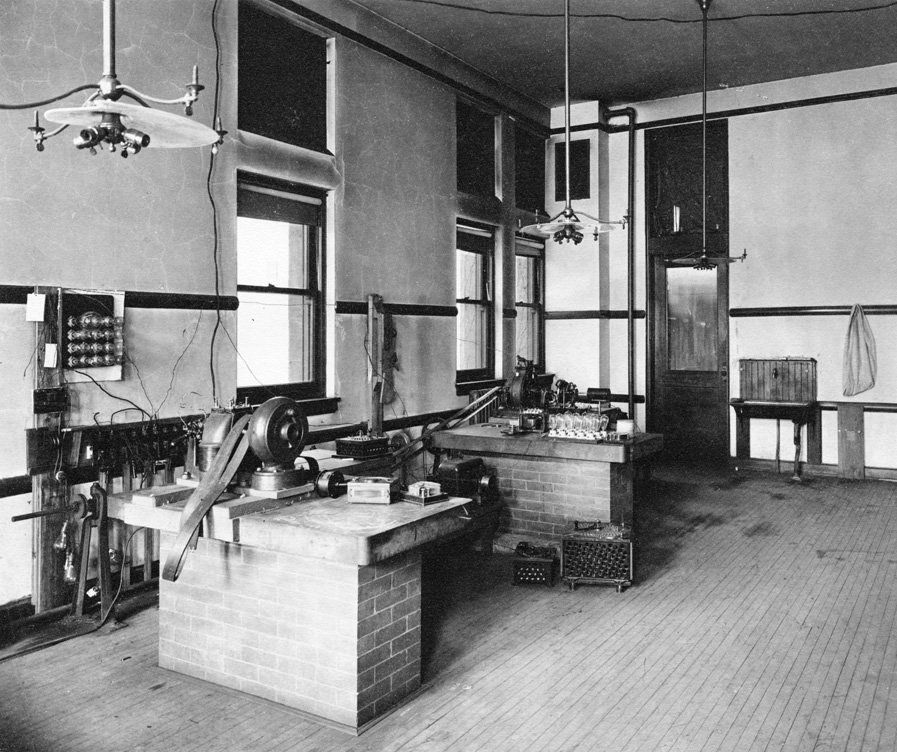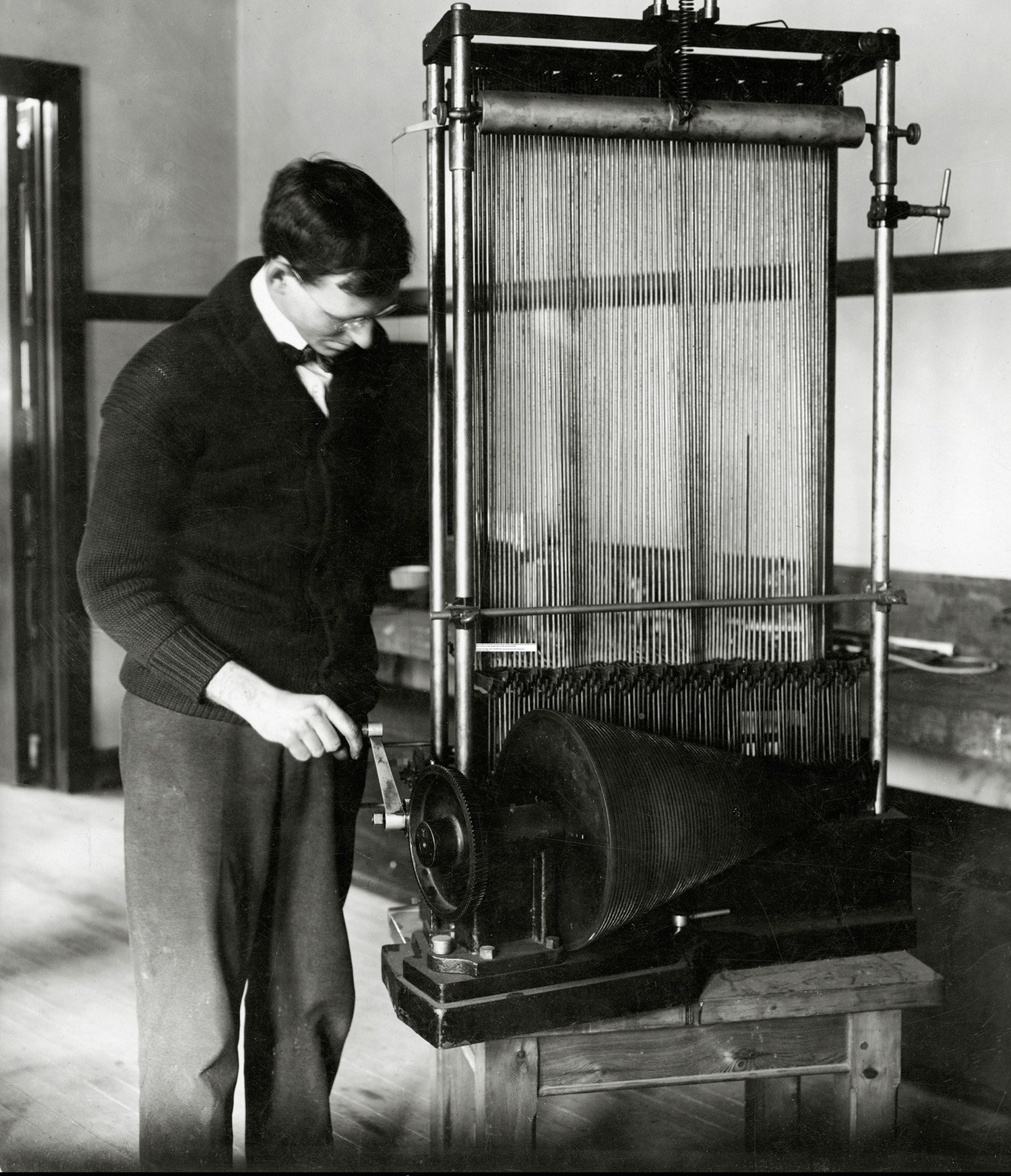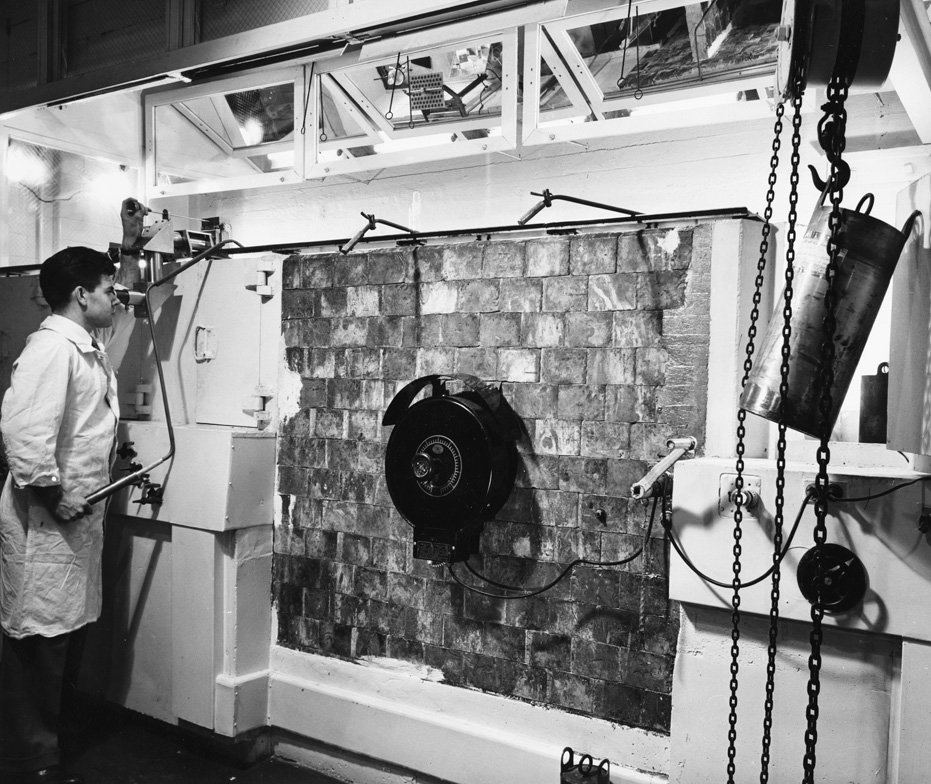A State of the Art Facility
When it opened, Ryerson contained four floors of laboratories. The basement and first floor labs were devoted to research, and these facilities employed the most up-to-date technologies. They included rooms held at constant temperature: high and low temperature rooms, and a 0° Fahrenheit and 0° Celsius room. Rooms were lined with four inches of cork on the floor, walls and ceiling for insulation and moisture control and featured icebox doors. The building also housed a carbon dioxide cooling plant to hold the temperatures stable.
Groundbreaking research was conducted in these labs, including Michelson’s oil drop experiments, Millikan’s work on photo-electricity and Gale’s optics research. Both Michelson’s and Millikan’s work in Ryerson contributed to their Nobel Prizes.
Instructional laboratories for upper-level students took up much of the second floor, with introductory laboratories on the third.
University of Chicago Photographic Archive. https://photoarchive.lib.uchicago.edu/. Identifier: apf2-07245
Block, Jean. 1983. The Uses of Gothic : Planning and Building the Campus of the University of Chicago, 1892-1932. Chicago: University of Chicago Library.
University of Chicago Photographic Archive. https://photoarchive.lib.uchicago.edu/. Identifier: apf2-07244
University of Chicago Photographic Archive. https://photoarchive.lib.uchicago.edu/. Identifier: apf2-07247
University of Chicago Photographic Archive. https://photoarchive.lib.uchicago.edu/. Identifier: apf1-04514
University of Chicago Photographic Archive. https://photoarchive.lib.uchicago.edu/. Identifier: apf2-07258
